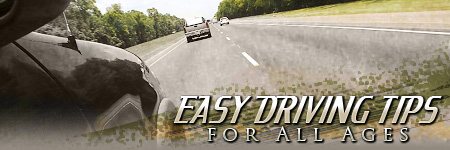|

Defensive Driving Tips for All Ages
As warm weather heats up and daylight lasts long into the evening, many people bid farewell to the winter blues by hitting the streets for some road-trip therapy. But it’s also a dangerous time: the period between Memorial Day and Labor Day is coined by many as the 101 deadliest days on the road for all drivers.
“Fatalities due to traffic accidents increase in the summer, because people tend to spend more time on the road,” says Charles Powell, creator of Passing the Written DMV Test, a DVD that translates the Department of Motor Vehicles handbook into an easy-to-view 40-minute program.
Powell suggests everyone brush up on their defensive driving skills in order to safeguard themselves and their families this summer. Among the five most important tips include:
Look a few blocks ahead – By looking farther ahead, you can detect and avoid dangerous situations before or as they happen, such as a car coming to an abrupt stop or a child running into traffic.
Look for a way out – Always have an exit strategy in mind. Having one can help you to react to dangerous situations quickly and safely.
Keep your distance – the rule of thumb is that you should leave a 3-second gap between you and the car in front of you. Roughly, that translates into 1 car distance for every 10 miles an hour driven.
Signal your intentions – Whether you are making a right or left turn or changing lanes, always signal where you intend to go. This alerts other drivers in advance and allows them to keep their distance, even if you don’t see them (for example, an on-coming vehicle as you are making a left turn).
Look, then back up – Among the leading cause of accidents is backing up into something or someone. Powell recommends taking a stroll around your vehicle before entering it. Doing so can help you avoid hitting objects that are in close range. Once you are in and ready to back up, check your rearview and side mirrors. Then physically turn your body to the rear and scan the surrounding area for any adults, kids or cars that are coming up behind you.
For more tips or to purchase the Passing the DMV Test DVD, visit www.passingthedmvtest.com.
(Source: PassingTheDMVTest) |